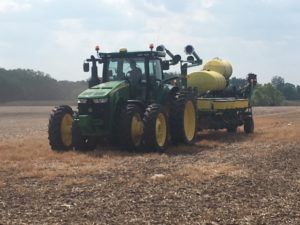Equipment Auction Digest
By Lindsay Humphrey
With planting season behind and harvest ahead, July is the age-old month for selling equipment. At least, that was the case 50 years ago when a combine wasn’t selling for a six-figure sum regularly. Of course, the factor that fluctuates the most in the equation is the age of the equipment.
“If you’re selling a 50- or even 30-year-old planter, then it doesn’t really matter when you try and sell it because the market doesn’t change much on that type of equipment,” said Rusty Harmeyer, who’s a real estate agent and auctioneer for Halderman. “Right now [late July] is not a bad time to sell a combine, but it’s not a good time to sell a new or newer model, high-dollar planter when it is sitting for the next eight months.”
Your location in relation to the crop season is an important factor to consider when you want to sell. However, you can also count on buyers from other states and even time zones to check out your equipment if it’s listed online.
“Even 30 years ago, a piece of equipment never went more than a couple hundred miles from where it was originally purchased,” Harmeyer said. “I would say buyers now have access to a country-wide if not worldwide, market thanks to the internet. Texas, for example, is already harvesting, so they’re not interested in buying that type of equipment, but they might be ready to look at other items.”
 The online component of equipment sales is advantageous for the seller but makes the buyer’s job a little more complicated. The added competition for a prime item will ideally drive up the price, which isn’t ideal for a buyer. However, online access simultaneously gives buyers more options for purchase.
The online component of equipment sales is advantageous for the seller but makes the buyer’s job a little more complicated. The added competition for a prime item will ideally drive up the price, which isn’t ideal for a buyer. However, online access simultaneously gives buyers more options for purchase.
“Technology is probably the biggest driver of how farm equipment marketing and sales have evolved over time,” Harmeyer said. “Things are always changing, and we [Halderman] try really hard to ensure we’re on the cutting edge. We’ve accepted and embraced technology to use it to its full potential for our customers.”
Coming up on the typical farm equipment season – November through March – Harmeyer has some insight into how to approach it.
“It used to be when a guy retired, he brought everything out from the sheds and lined them up for an auction, everything from the combine to a box of screws sold,” Harmeyer said. “Now, because of the price point of equipment, guys don’t want that much income all at once. They’ll usually spread their equipment marketing and sales over a few years.”
It’s never been easier to sell three or four pieces at a time and hold on to the rest for a bit. Perhaps this is helping drive up the demand for used equipment while brand-new pieces are still hard to get a hold of.
“If you order a new piece of equipment now, you probably won’t get your hands on it for another 12 to 18 months,” Harmeyer said. “This past spring, demand for used equipment was still strong and selling very well. The Farm Equipment Dealers Association reported that monthly new equipment sales were down. I don’t think that’s a huge shock because of interest rates and what they’ve done. The commodity prices have been pretty volatile over the last few months, and the weather uncertainty doesn’t make that kind of investment appealing right now.”
This might be the off-season for equipment sales, but Harmeyer said that shouldn’t deter someone from putting their items up for sale anyways.
“There is always someone, somewhere, looking for something, and it just might be the equipment you’re looking to sell,” he added.
